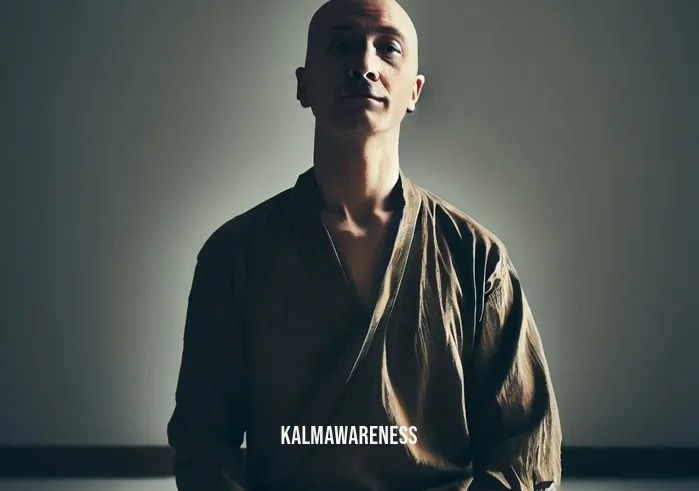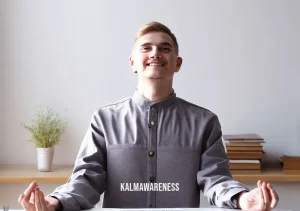Is It Bad to Meditate Lying Down: Delving into Posture and Benefits
Meditation has evolved over centuries, moving from ancient rituals to modern-day practices that cater to personal preferences. Among these preferences is the position one adopts while meditating. The question many have is, is it bad to meditate lying down? Let’s embark on a journey to understand the significance of posture in meditation and its connection to the overall experience.
Understanding the Essence of Meditation Posture
Traditionally, meditation has been associated with a seated position, preferably in a lotus pose. But like all things, meditation too has evolved. Different practices like mindful dog training and gratitude yoga in Princeton show us the versatility of mindfulness and its integration into various spheres of life.
When contemplating whether lying down diminishes the quality of meditation, we must first understand the significance of posture. Posture in meditation isn’t just a physical aspect; it’s deeply connected to our mental and emotional states. An erect posture, as described in mindfulness in plain English summary, signifies alertness and attentiveness, while a slouched position might hint at a distracted or tired mind.
Advantages of Lying Down Meditation
Meditating while lying down is not a contemporary concept. Body scan meditations, for instance, often encourage participants to lie down. Here are some advantages:
- Comfort: As highlighted in always comfortable, for those with back issues or physical discomforts, lying down can provide the necessary relief, allowing them to focus on the meditation rather than the pain.
- Enhanced Relaxation: Lying down can initiate a state of relaxation faster, preparing the body and mind for deeper meditation. Jon Kabat-Zinn’s 10-minute meditation often uses this position to introduce beginners to the world of mindfulness.
- Accessibility: For some, sitting might not be an option due to various reasons. Lying down ensures that meditation remains inclusive.
Considering the Potential Pitfalls
While lying down has its advantages, there are reasons why some practitioners might advise against it:
Risk of Falling Asleep: One of the chief concerns about lying down is the ease with which one can drift into sleep, especially during meditation made simple sessions designed for relaxation.
Physical Distractions: Unlike a mindful therapy in Commack session where the therapist can guide the posture, meditating alone while lying down can lead to unaware adjustments and movements, causing distractions.
Energy Flow: Eastern meditation traditions believe in the flow of energy (or chi/prana). They argue that sitting upright facilitates a better flow than lying down.
Breathing and Meditation: The Connection
Regardless of the position, the breath remains a central element in meditation. Breathing ratio studies have emphasized the importance of consistent and deep breathing during meditation. When lying down, one must ensure that the breath isn’t shallow or obstructed, which can sometimes happen due to the relaxed position.
Connecting with the breath, observing its rhythm, and using it as an anchor is beautifully explained in mind breaths. Whether you’re sitting, standing, or lying down, the essence of meditation remains in your ability to center yourself and connect deeply with the present moment.
Conclusion and A Glimpse Ahead
The essence of meditation is a deep connection with oneself. While the posture can aid in this process, it’s crucial to remember that the real journey happens within. If lying down enhances your connection, embrace it. If it acts as a barrier, explore other postures.
In the next chapter, we will delve deeper into techniques and research surrounding meditation postures. We’ll also explore some notable insights from the mindful brain and how science views the act of meditation in different positions. Stay with us, and continue reading to deepen your understanding.

Analyzing the Impacts of Lying Down During Meditation
As we deepen our exploration into whether it’s unfavorable to meditate while lying down, it’s crucial to analyze the nuances. Meditation, a practice rooted in mindfulness, has several approaches, each tailored to individual needs and situations. Here, we’ll study the aspects of meditating in a supine position, and equip readers with knowledge to make an informed decision.
Factors Affecting the Choice of Meditation Position
Before diving into specifics, let’s explore the myriad factors influencing one’s choice of meditation position:
- Physical Health: Conditions such as chronic pain can make certain positions unbearable. For some, neuro-somatic mindfulness offers relief, and lying down can be beneficial.
- Environment: The place where you meditate can impact your posture. For instance, during mindful way counseling, lying down might promote vulnerability and openness.
- Meditation Duration: Longer sessions might demand comfort. As mentioned in mindfulness meditation for 20 minutes, the position must support the duration.
Comparative Analysis: Lying Down vs. Other Positions
| Position | Advantages | Potential Issues |
|---|---|---|
| Lying Down | – Full spinal support <br> – Easier diaphragmatic breathing <br> – Reduced muscle tension | – Possibility of dozing off <br> – Might not be suitable for certain meditation types |
| Seated | – Traditionally recommended <br> – Facilitates energy flow <br> – Promotes alertness | – Strain on back muscles <br> – Legs might get numb during long sessions |
| Standing | – Enhances alertness <br> – Good for short sessions | – Leg fatigue <br> – Risk of physical distractions |
| Walking | – Integrates movement & mindfulness <br> – Good for restlessness | – Requires more focus to avoid external distractions |
Mindfulness and Perception: How We View Meditation Positions
The way we perceive different meditation positions, especially lying down, is influenced by our beliefs, needs, and experiences. Taking a page from mindfull vs. mindful, the essence of mindfulness is being present without judgment. Thus, the best posture is truly one that allows an individual to attain this state.
Lying Down Meditation: Techniques and Precautions
Lying down meditation isn’t a one-size-fits-all. There are varied techniques and precautions to consider:
Techniques:
- Body Scan: Popularized by teachers like Jack Kornfield, body scan meditations involve mentally traveling through different parts of the body.
- Deep Breathing: Aligning with the 10 mindful minutes free download, deep breathing exercises can be enhanced when lying down.
- Visualization: Imagine serene locations, promoting relaxation and tranquility.
Precautions:
- Ensure your spine is aligned.
- Place a cushion under the knees to prevent lower back strain.
- If drowsiness is a concern, keep the arms upright or fold hands on the chest.
Conclusion: Embracing Individual Preferences
In the vast realm of meditation, one thing stands clear: there’s no universally right or wrong method. It’s about what resonates with you, what supports your body and mind in that shared journey of mindfulness. Whether it’s lying down, sitting, or any other position, the objective remains the same — being in the present.
As we progress, in the next chapter, we’ll focus on how different cultures and traditions view lying down during meditation. We’ll also touch upon insights from meditation consultant experiences and how they’ve guided individuals in making this choice. Continue reading to further deepen your comprehension on this intriguing topic.
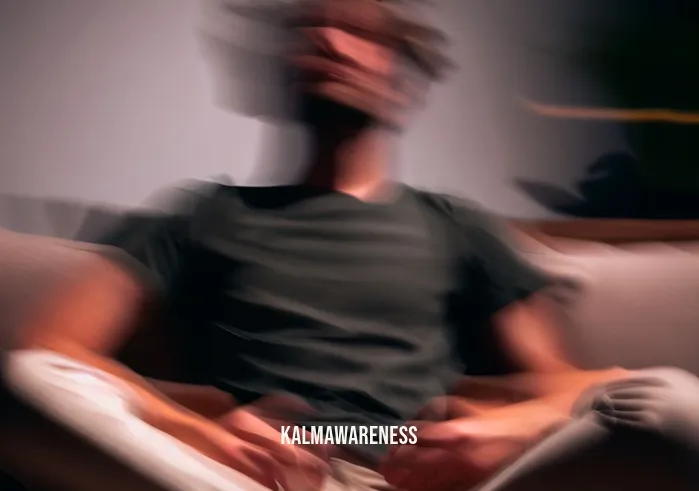
The Resonance of Hope in Meditation Postures
In the introspective journey of meditation, hope is often a powerful guiding force. The concern, “is it bad to meditate lying down?” isn’t merely a question of physical posture but one deeply intertwined with our emotional and mental landscapes. The alignment of our bodies can, at times, mirror the alignment of our hopes and inspirations.
Stories that Inspire
Throughout history, great thinkers, spiritual leaders, and meditation experts have deliberated on the essence of posture in meditation. Their insights, peppered with hope and understanding, can serve as a beacon for those navigating these waters.
“The position of our body is a mirror of our mind. The physical can lead, and the mind will follow.” – An excerpt from The Mindful Brain.
This quote underscores the reciprocity between our physical presence and mental state. The posture we adopt, whether seated or lying down, can channel our intentions and guide our thoughts.
“Finding peace doesn’t mean being static. It means finding stability in any state, be it motion or stillness, sitting or lying down.” – Thoughts from a meditation rest token session.
Peace, as this narrative suggests, is about equilibrium. It’s not confined to a posture but blossoms from understanding and acceptance.
“In moments of profound introspection, the earth itself becomes the cushion, holding us, whether we sit or lie down, in its vast embrace.” – A contemplation during gratitude yoga in Princeton.
Nature, in its boundless wisdom, doesn’t differentiate. It offers solace and strength, irrespective of our physical orientation.
Gleaning Wisdom from the Modern World
As we transition from age-old wisdom to the present, we find contemporary voices echoing similar sentiments. Mindful therapy in Commack underscores that the mind’s well-being often surpasses the exactness of posture.
Equally, the teachings from Mindfulness in Plain English summary highlight that meditation, in essence, is about the journey inward. The focus remains not on the shell but on the soul, not on the stance but on the spirit.
The Journey Ahead
While the reflections of past and present luminaries provide solace, the quest for the ideal meditation posture remains deeply personal. Some find hope lying down under a canopy of stars, while others, in the heart of bustling cities, find solace seated on park benches. The universality lies not in the posture but in the pursuit of peace.
As we pivot to our subsequent exploration, we will delve into the scientific realm. Is there empirical evidence about the efficacy of lying down during meditation? And how does this correlate with our spiritual and emotional well-being? Find the answers, understand the intricacies, and perhaps discover your ideal posture in the next chapter.
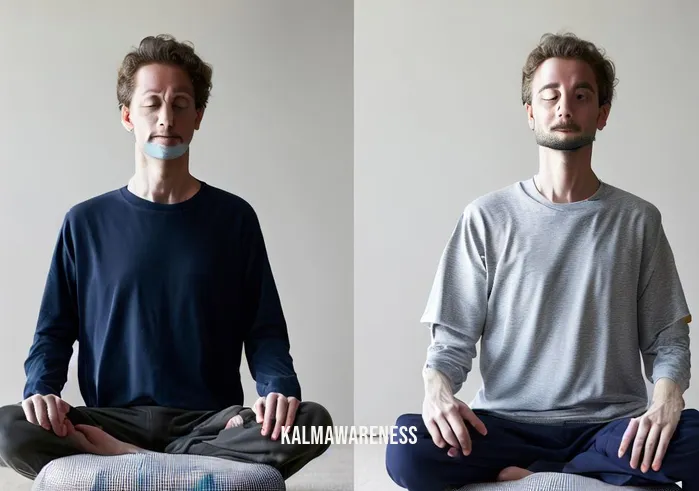
The Anatomy of Lying Down Meditation
As we continue to unravel the layers behind the question “is it bad to meditate lying down?”, it becomes evident that our stance during meditation is not merely a physical choice but a holistic one. By breaking down the information, we hope to present a clearer picture of lying down meditation, its implications, benefits, and considerations.
Benefits of Lying Down Meditation
Physical Comfort: For many, especially those with back issues or physical constraints, lying down provides a comfortable alternative to sitting. As highlighted by Mindful Way Counseling, it’s essential for the body to be at ease for the mind to focus inward.
Aids Relaxation: Being horizontal can signal the body to relax, making it easier to enter a state of deep relaxation or even Neuro-Somatic Mindfulness.
Natural Alignment: Lying down, especially on a flat surface, can encourage the natural alignment of the spine, reducing strain.
Grounding Experience: Connecting with the earth, whether on the grass or a floor, can provide a grounding experience, enhancing the quality of meditation.
Considerations When Meditating Lying Down
Risk of Falling Asleep: One of the primary concerns, as discussed during Jon Kabat-Zinn’s 10-minute meditation, is the increased likelihood of drifting into sleep. For some, this might be beneficial, but for others, it could be a deterrent from an alert meditative state.
Breath Awareness: Lying down can alter the breathing pattern. While it’s possible to achieve an optimal breathing ratio, it requires more conscious effort.
External Distractions: Depending on where one chooses to lie down, there can be increased susceptibility to external distractions, be it from the environment or others around.
Physical Limitations: While lying down can be comfortable for many, it might not be suitable for everyone, especially those with certain medical conditions.
Making an Informed Choice
While the practice of lying down during meditation has its supporters and critics, the decision ultimately boils down to personal preference and needs. How to sit with emotions reminds us that the essence of meditation is not in the posture but the practice. Whether seated, standing, or lying down, the aim remains to be present, aware, and connected.
However, as with any practice, it’s crucial to be informed. Recognizing the benefits and potential pitfalls can aid in making a conscious choice that aligns with one’s meditation goals.
Looking Forward
As we prepare to round off our exploration, the final chapter promises to weave all the threads together. From understanding the nuances of lying down meditation to integrating it seamlessly into one’s routine, the culmination of our journey awaits in the next segment.
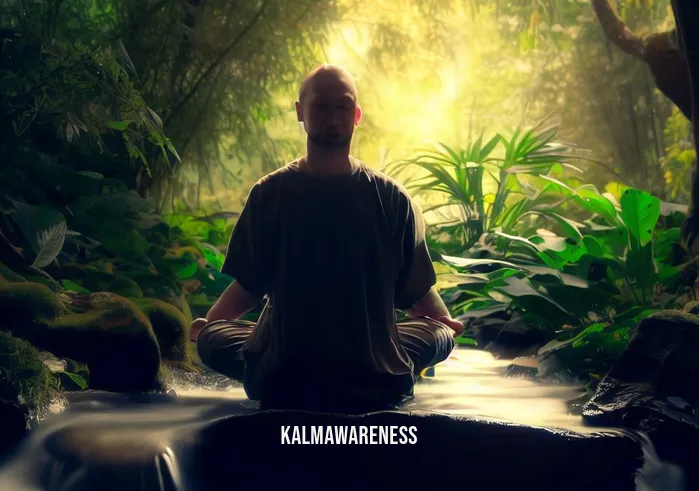
Reflecting on the Art of Meditation Posture
Our exploration around the question “is it bad to meditate lying down?” has taken us through various facets of meditation, its practices, and the nuances surrounding posture. Let’s take a moment to revisit and summarize our journey.
The Meditation Landscape
The realm of meditation is vast and varied. While practices like gratitude yoga center on gratitude and mental positivity, techniques like mindful dog training bridge mindfulness with daily activities. Within this tapestry, the question of posture, specifically lying down, occupies a special place.
Pondering the Posture
The act of lying down during meditation can be likened to the mindful therapy approach. It’s not about rigidly adhering to a specific form, but understanding what resonates best with the individual. As we’ve seen, while lying down can be a sanctuary for some, for others, it might act as a lullaby, leading them to the realm of dreams.
Navigating Nuances
Just as we understand the difference between being mindfull vs. mindful, it’s essential to recognize the subtle distinctions in our meditation choices. Whether it’s taking the time for a 20-minute mindfulness meditation or simply sitting with our thoughts for a few moments, every approach has its unique offerings.
A Call to Further Exploration
If this exploration has ignited a spark of curiosity in you, don’t let it end here. Dive deeper into the world of mindfulness, perhaps by understanding the intricacies of the mindful brain. Or, if you seek structured guidance, consider seeking a meditation consultant.
A Heartfelt Thank You
To our dear readers, thank you for joining us on this enlightening journey. Your presence and engagement have been invaluable. We are thrilled to have shared this space with you and hope to offer many more insightful narratives in our future editions.
So, as we conclude our expedition on “is it bad to meditate lying down?”, remember that meditation is a personal journey. Trust your instincts, embrace your unique path, and may every breath bring you closer to inner peace and clarity.
